
Reports that are generated and that shows graphs
are opened in the report viewer.
One example of how a report might look can
be seen in the image below.

If the report viewer is opened from a report there are two different tabs to choose from, selection and Pivot table. If Pivot table is selected it is shown like in the image above with a graph. If selection is shown a window is opened that shows what selecetons the graph is using, see image below. If it is opened elsewhere there is only one tab, the pivot table.
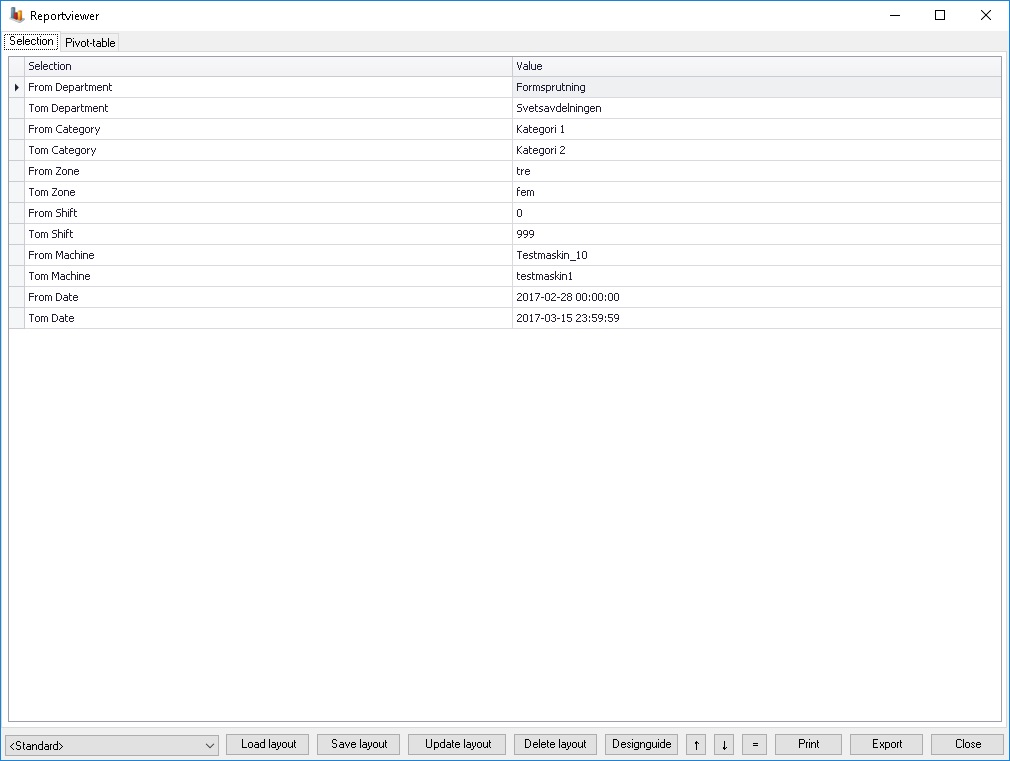
There are two arrow buttons in the bottom of the screen, one up and one down. The up arrow button shows the pivot table and the down arrow button hides the pivot table. In the upcoming section we will take a closer loook at the graph/pivot, see picture below.

Below is a minor field example.

Below the graph there are blocks that decides how the graph should look depending on where they are arranged. By moving the blocks around the graph looks differently.

Blocks that are placed in the red box (RecordNumber in
the image above) will not be included in the graph.
Blocks that are placed in the blue box (q_target in
the image above) are shown as cells in the list and as bars in the graph,
(its the "values").
Blocks that are placed in the orange box
(object_no in the image above) are shown as rows in the list and as the
x-axis in the graph.
Blocks that are placed in the purple box (CompId in the image above) are shown as
columns in the list and decides the coloring of the bars.
After re-arranging the boxes the graph could for example look as below.
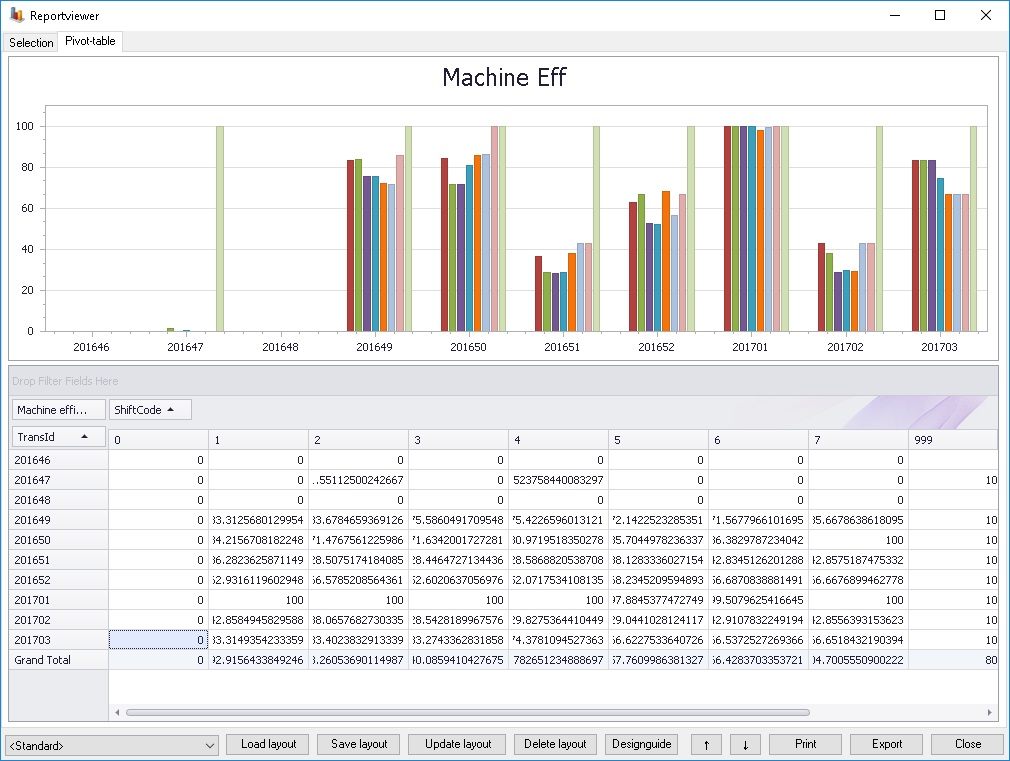
At the bottom of the reportviewer there are buttons. See the image below.

An explanation of the image follows below:
Drop down list
In the drop-down
list you can find all available layouts You can chose a layout
and then press "Load layout", "Save Layout", "Update layout" and "Delete
layout".
Load layout
Loads
the layout that is selected in the
drop down list.
Save layout
Lets the user save the current layout. If pressed a new window
is opened where the user gets to enter a name for the new layout.
See image below. 
Update
layout
Saves the currently active
layout.
Delete
layout
Removes the in the list chosen
layout.
Design guide
Opens up an external window
where the user step by step can design how the graph should
look.
Print
Print opens a window where the user gets to
chose which data to print(see image below). Each choise are printed on a
separate page.
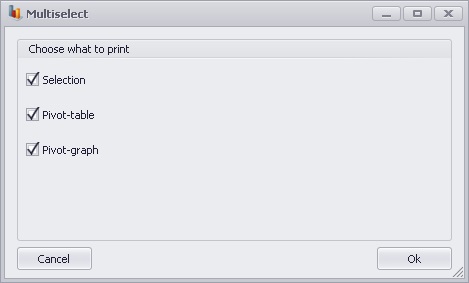
Up and down
buttons
Hides (down button) or shows (up button) the pivot
grid.
Equals
The button with the equality sign
allows the user to create its own fields.

Once created the filed contains no data. To fix this you can rightclick on the field and press the button "Expression editor".
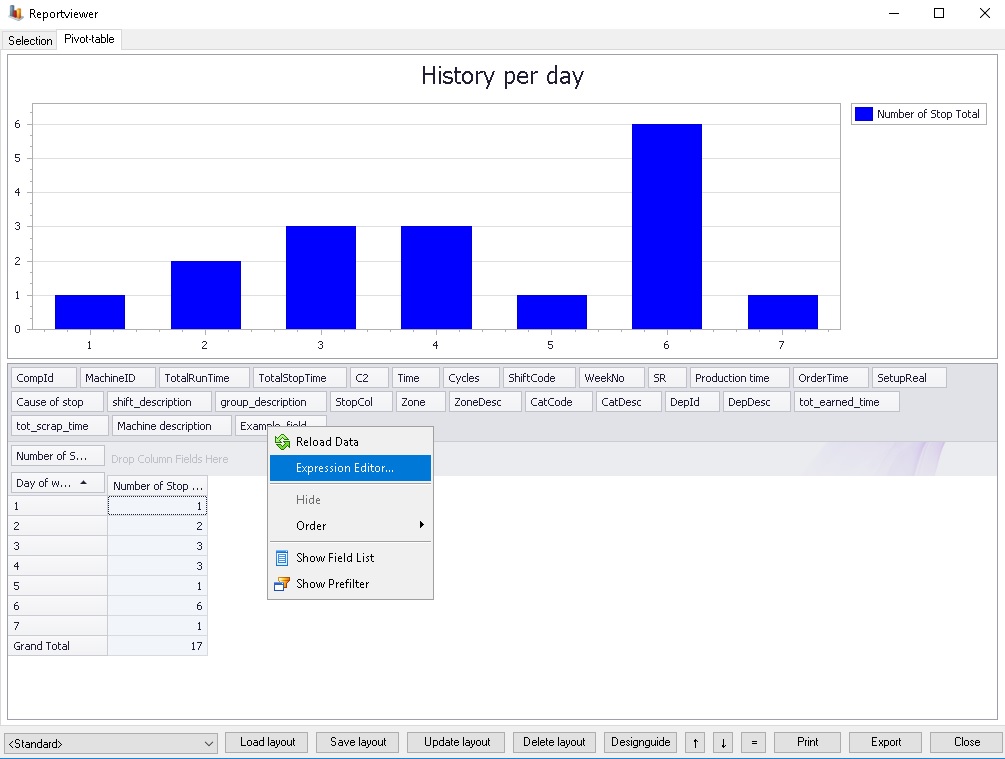
This opens up a new window called the expression editor. In the expression editor you can make calculations on what to show. In the example below we add the two fields TotalRunTime and TotalStopTime and put the result into the new field.
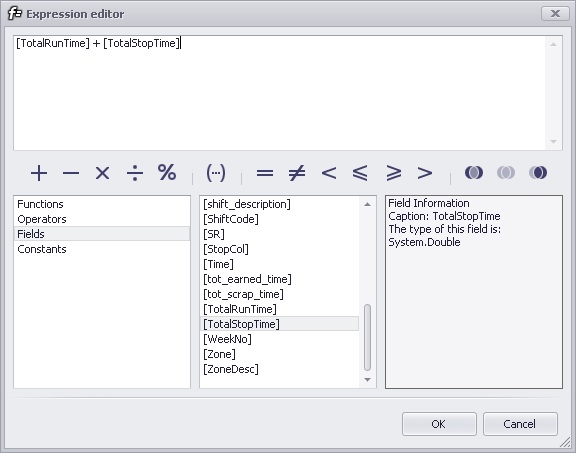
Selection gives a list like in the image on the right side at the
top of this page. Pivot tabl
e creates a
table with data, see the green box in the image below. Pivot graph gives the graph
shown in the blue box below.

Export
Export
let's the user choose a map on the computer where
he/she want's the graph exported. When this is done three files will
be created. One with the selection, one with the pivot table and one with the
graph.